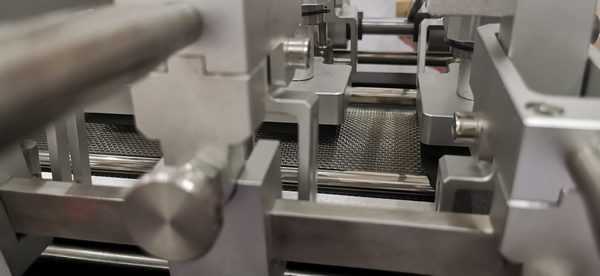-
Textile oscillatary abrasion tester: A Comprehensive Guide to Testing Textile Durability
Edited by:Read:Textile oscillatory abrasion tester is a testing instrument used to determine the durability and strength of fabrics against abrasion. It is a standard testing method widely used in textile industries and laboratories. The testing principle applies repeated oscillation of a textile specimen between two plates with an abrasive surface. By using a testing instrument, the number of cycles required to produce an initial damage or rupture on a specimen can be measured. Here is a comprehensive guide to testing textile durability using the oscillatory abrasion tester:

1. Determine the testing material The first and foremost step is to choose the textile material to be tested. The textile material should reflect the intended application of the product. It is important to test the fabric that is intended for the desired application.
2. Testing procedure Place the specimen on the lower plate and lock it into position. The upper plate with abrasive cloth is now placed onto the specimen and attached by tightening the screws. The cyclic abrasive motion of the upper plate is initiated by activating the motor. Cycles are run via the user's pre-selected settings.
3. Measure the damage After running the cycles, assess the amount of damage to the textile material. Count the number of cycles it takes to create a visible change or detect failure in the specimen. It is important to check the damage at regular intervals, such as every 1000 or 2000 cycles.

4. Record and report results Record and report the results of the test. The results should include the number of cycles, the type of damage, and any observations.
The textile oscillatory abrasion tester is an effective way to assess the durability of textiles. It can be used to test materials such as upholstery fabric, carpets, clothing, and more. By using this testing mechanism, textile manufacturers can ensure that their products are tough enough to survive their intended application. The results will be useful in making any necessary improvements to the product, as well as in determining the next course of action.
- 2024-04-19Paper ring compression strength tester standards
- 2024-04-19Cupping tester standards
- 2024-04-19Rubber and plastic tensile tester standards
- 2024-04-19Taber 1750 wear-resistant tester standards
- 2024-04-19Stone Chip Resistance Gravelometer standards
- 2024-04-18Diaper absorption speed tester standards
- 2024-04-18Diaper leakage tester technical indicators
- 2024-04-18Paint film impact resistance tester standards
- 2024-04-18Low temperature brittleness tester principle
- 2024-04-18Battery separator permeability tester technical indicators



